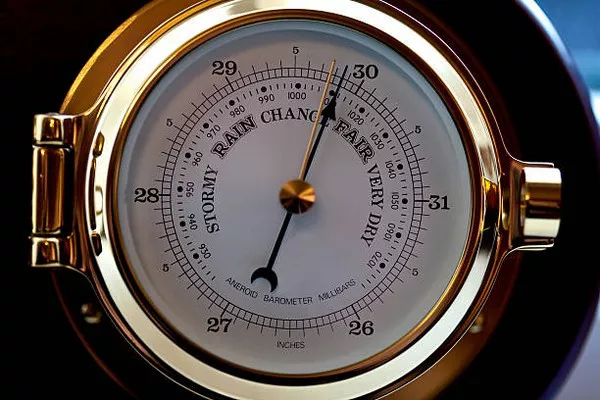Barometers are fascinating instruments that have been utilized for centuries to measure atmospheric pressure. While modern technology has made some of their traditional uses less common, the practice of tapping a barometer remains an interesting topic for discussion. This article explores the reasons why one might tap a barometer, the science behind its operation, and the broader implications of atmospheric pressure measurement.
The Basics of Barometry
A barometer is an instrument that measures atmospheric pressure, which is the weight of the air above a given point. The primary types of barometers include mercury barometers, aneroid barometers, and digital barometers. Each type has its own mechanism for measuring pressure.
Mercury Barometer: Consists of a glass tube filled with mercury, where changes in atmospheric pressure cause the mercury level in the tube to rise or fall.
Aneroid Barometer: Uses a small, flexible metal box that expands and contracts with changes in pressure, translating these movements into readable measurements on a dial.
Digital Barometer: Employs electronic sensors to measure pressure and display the readings digitally, often incorporating additional features such as altitude measurement and weather forecasting.
The Action of Tapping
Tapping a barometer, particularly an aneroid one, is a common practice among users. But why do people do this? There are several reasons:
1. Calibration and Accuracy
Tapping can help recalibrate the instrument. Over time, aneroid barometers can become less accurate due to factors like mechanical wear or environmental changes. Tapping the device can help reset the internal mechanisms, ensuring more accurate readings. This is especially important for outdoor enthusiasts, pilots, and meteorologists who rely on precise measurements for safety and decision-making.
2. Unsticking the Mechanism
The internal components of an aneroid barometer can sometimes become stuck due to temperature changes, humidity, or other environmental factors. Tapping can free up the mechanism, allowing it to move more freely and provide a more accurate reading. This physical adjustment can be critical in ensuring that the barometer functions as intended, particularly in variable weather conditions.
3. Enhanced Response Time
Tapping may also improve the response time of the instrument. If the barometer’s mechanism is sluggish, a gentle tap can prompt it to respond more quickly to changes in atmospheric pressure, which is vital during rapidly changing weather conditions. This responsiveness can be crucial for those needing timely information, such as sailors and hikers.
4. Habit and Tradition
For many, tapping a barometer has become a habit, passed down through generations of users who view it as part of the ritual of checking the weather. This tradition reflects a deeper human connection to nature and the desire to understand our environment. The act of tapping serves as a reminder of the barometer’s historical significance and the role it has played in weather prediction.
The Science of Atmospheric Pressure
Understanding why barometers are tapped also requires a deeper look at atmospheric pressure and its implications for weather prediction. Atmospheric pressure fluctuates due to various factors, including altitude, temperature, and weather systems.
1. Weather Forecasting
Barometers play a critical role in weather forecasting. Changes in atmospheric pressure can indicate upcoming weather patterns. For example, falling pressure typically suggests an approaching storm, while rising pressure often indicates clear weather. Tapping the barometer can enhance the accuracy of these predictions by ensuring that the instrument is operating optimally.
2. The Impact of Altitude
Atmospheric pressure decreases with altitude, meaning barometers are also essential for determining elevation. Tapping can help calibrate the barometer for altitude readings, allowing users to make accurate adjustments based on their location. This is particularly useful for hikers and mountaineers who need to track their altitude in real-time.
Modern Uses and Technological Advances
While the fundamental principles behind barometers remain unchanged, advancements in technology have transformed their use. Digital barometers, for example, provide more accurate and rapid readings than their analog counterparts. These devices often include features such as Bluetooth connectivity, allowing users to track atmospheric pressure changes remotely.
1. Integration with Smart Technology
Smart weather stations and apps now often incorporate barometric readings, providing users with real-time data and forecasts. These technologies have made it easier than ever to monitor atmospheric conditions without the need for manual tapping or calibration.
2. Environmental Monitoring
Barometers are also essential in environmental monitoring and research. Scientists use barometric readings to study climate change, weather patterns, and atmospheric phenomena. As global climate challenges grow, the need for accurate atmospheric data becomes increasingly important.
See Also How to Use a Barometer to Predict the Weather
Conclusion
Tapping a barometer may seem like a simple act, but it holds significance rooted in tradition, practicality, and the fundamental science of weather. Understanding atmospheric pressure and its implications enhances our ability to predict weather patterns and respond to environmental changes. Whether you are a seasoned meteorologist, an outdoor enthusiast, or simply someone curious about the weather, the barometer remains a valuable tool in our quest to understand the world around us. So next time you check the weather, consider giving your barometer a gentle tap—it might just lead to a more accurate forecast.

